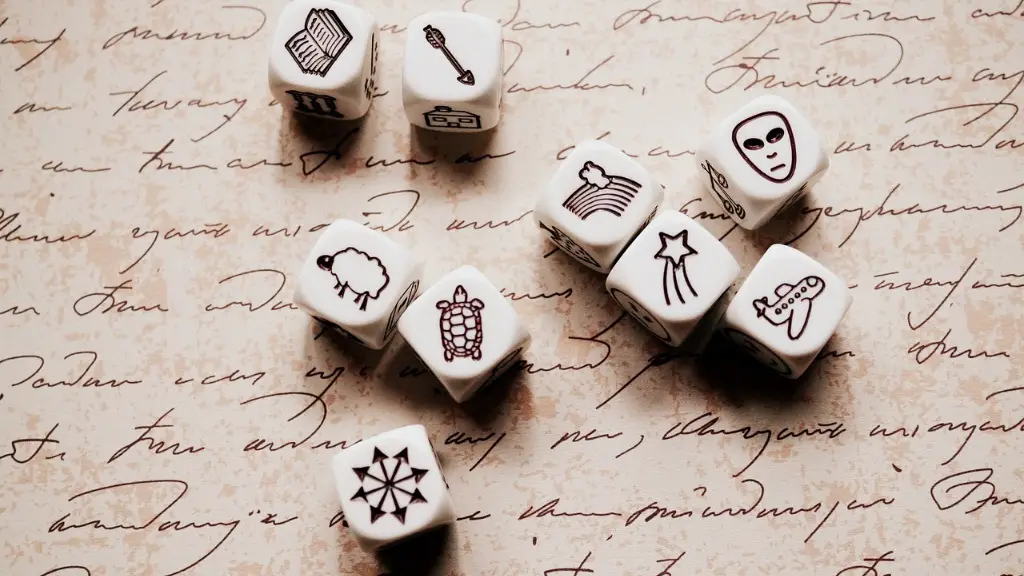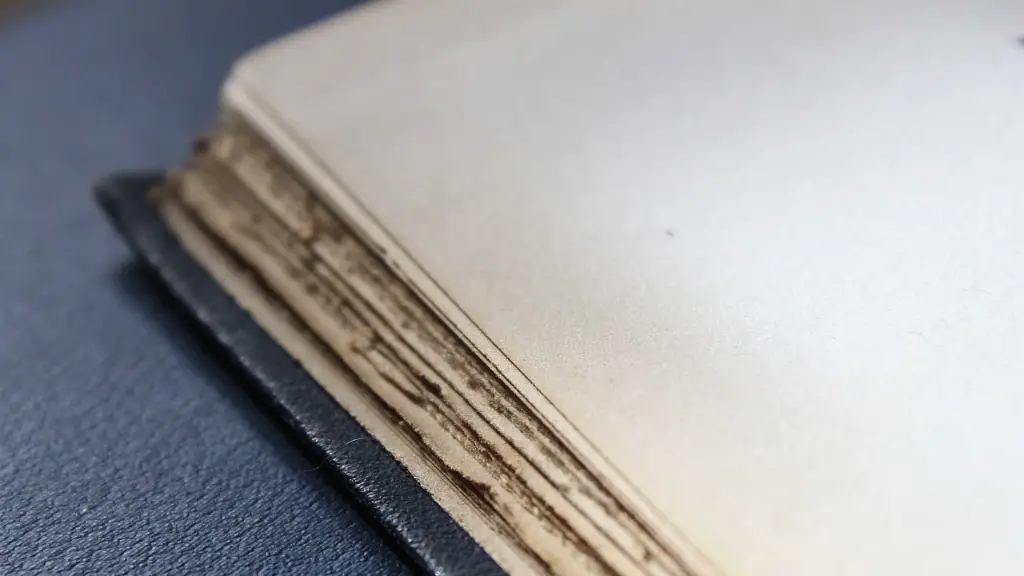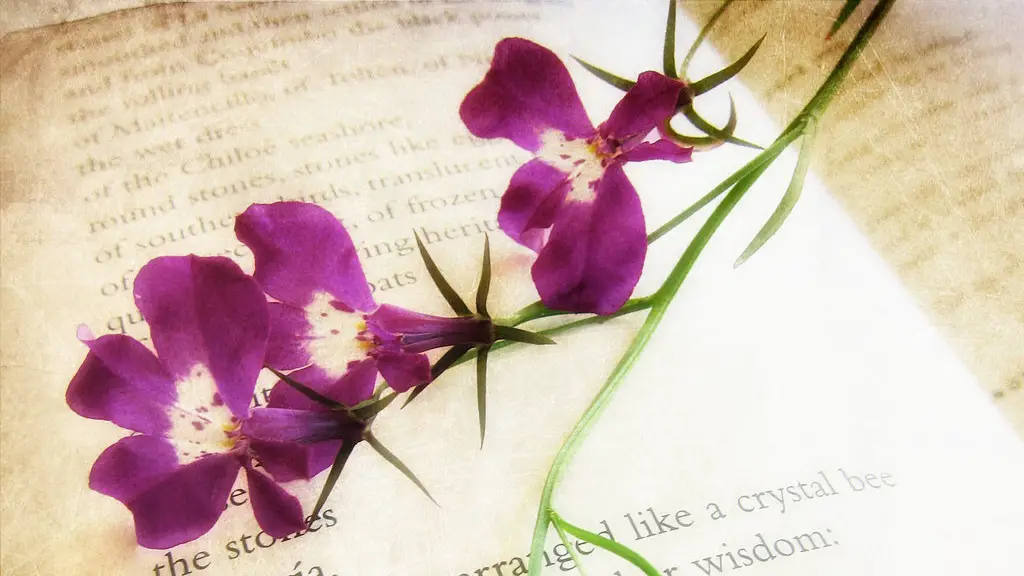What is poetry? Most simply put, poetry is a form of self-expression often taking the form of words crafted together to express a feeling or convey a message. But words cannot truly encapsulate the complexity and beauty of poetry. Poetry is an art form which requires more than words to be appreciated. It is an emotional, creative journey one embarks upon through reading, writing, studying, and understanding a work of poetry.
At its core, poetry can be defined as a form of literature that combines aesthetics, rhythmic patterns and imagery to add depth to a work. A poem, therefore, can be seen as a means to express emotion, an idea or a thought. Through the form and structure of a poem, the writer creates a narrative and unifies the flow of ideas, capturing the reader’s attention.
Poems can take many forms; from short lyric written in free verse to epics that tell stories through verse. Several poetic elements such as alliterations, rhyming schemes, metaphors, and punctuation are used to strengthen the impact and emotion of a poem. The use of meter and rhythm are also essential parts of poetry, and they go hand in hand with other elements such as tone, imagery and symbolism to add further richness and texture to the poem.
One of the advantages of poetry is its ability to evoke emotion. Through the use of rhythm, tone, imagery and diction, a poem can evoke feelings of joy, sadness, despair or celebration in the reader. This is because many poems tap into the human narrative, capturing what it means to be alive and feel.
There are several renowned poets throughout the ages, but one of the best-known is William Wordsworth. His works focus on the beauty of nature, romantic love and the power of memories. He used some of the most admired poetic elements to bring out his message. From meter and rhythm to imagery, Wordsworth’s works are remarkable examples of great poetry.
Similarly, celebrated Chinese poet Li Bai is recognized for his works that are packed with both emotion and beauty. Through his words, Li Bai explored the depths of emotion, setting the tone for his readers to decipher. He was highly regarded for his use of vivid imagery, which he achieved by using figures of speech and metaphors.
In conclusion, poetry can be seen as an expression of feeling, a narrative of life and a craft that has its place in literature. Through its words, poems can evoke emotions, while its structure creates a narrative. The depth and beauty of poetry come from its use of elements and how the author uses them to capture their emotions.
The Perception of Poetry
When discussing poetry, it is often difficult to gauge its impact. This is because the perception and appreciation of poetry vary from person to person. For some individuals, poetry is seen as an outdated form of expression that’s lost its place in contemporary culture, while for others, it remains a valid expression of emotions in which anyone can relate.
These varying opinions can be attributed to the many aspects of poetry itself. While some readers are quick to peruse a poem, analyzing its meter and rhythmic patterns, another reader may focus on larger notions of beauty, rhythm, and overall message.
The appreciation of poetry also differs greatly according to language. Translations can often be deceiving, and readers are thus encouraged to read and understand a poem in its original language. Particularly in the case of Chinese or French poetry, readers may struggle to relate and find meaning from a translation and so lose the original beauty of the work.
Overall, the appreciation of poetry is a highly subjective experience and readers are encouraged to engage with and form their own opinion. By reading, studying, and understanding a poem in its original language, readers can build an insight into the beauty of poetry.
History of Poetry
Poetry has a long and complex history. It can be traced back to ancient civilizations such as Egypt and Mesopotamia, each of which have contributed to the development of the form. Ancient works that focus on mythology and nationalism, such as the Epic of Gilgamesh and The Iliad, laid the foundation for poetry as we know it today.
As poetry developed, different poetic forms emerged. Throughout the Middle Ages, poets focused on the conventions of certain forms, such as the sonnet and ballad. During this period, works of the time often revolved around medieval themes such as chivalry and courtly life.
The Renaissance marked a new era for poetry, with the emergence of the work of authors such as William Shakespeare and John Donne. This period focused on self-expression and introduced many of the conventions used in modern poetry range from classic works written about philosophy and worship, to more emotive approaches that explored love, life and death.
As the centuries progressed, the focus of poetry shifted from politics and religion to the contemplation of social issues and life’s injustices. The works of poets such as Langston Hughes, whose work tackled racism and poverty, are often regarded as some of the most powerful and revolutionary poems of the time.
Writing Poetry
The process of writing poetry requires an individual to think in a creative and expressive way. Writing poetry can often be a difficult task and requires an understanding of structure, form and language.
Firstly, aspiring poets are encouraged to read and understand different poetic works. This process can aid in developing an understanding of the form and structure of a poem, while also providing the insight necessary to craft a work that captures emotion and meaning.
Diagrams, such as flow-charts, can also serve as a helpful tool to organize ideas. Plotting out the overall idea of a poem, as well as the individual ideas and points can often help give structure and a narrative to a poem.
In addition to these methods, poets must also consider their use of language. Through the use of figurative language and other poetic elements, poets are able to create a deeper level of emotion and meaning in their works. Furthermore, by creating strong imagery and metaphors, poets can make their works more vivid and powerful.
Poetry’s Role Today
The role of poetry today is much more vast than it was in the past. Although poetry is often still seen as an antiquated form, it nonetheless maintains its power to evoke emotion and capture beauty in words.
Aside from individual readers, the impact of poetry has been catapulted to the international stage with more poets becoming best-selling authors. Poets such as Rupi Kaur and Warsan Shire have used the power of their words to create pieces of work that have gone viral on social media and moved readers across the world.
Another important factor in the rise of poetry is pioneered platforms. Slam poetry, for example, has served as a powerful platform for storytellers to express their stories and captivate their audience. This form of performance poetry has also changed the way poems are read and appreciated.
At the same time, creative writing workshops, local slams and spoken word events have inspired countless individuals to embrace their voice and write their own poetry. These forums provide the perfect platform for aspiring writers to explore their words and gain feedback from the audience.
Conclusion
Poetry is an emotive form of expression that has its own unique place in literature. It is an art form that has evolved a lot since its inception and is still very much alive in our culture today. By relying on elements such as imagery, tone and structure, a poem can evoke emotions that capture the beauty of life and capture the human narrative.





